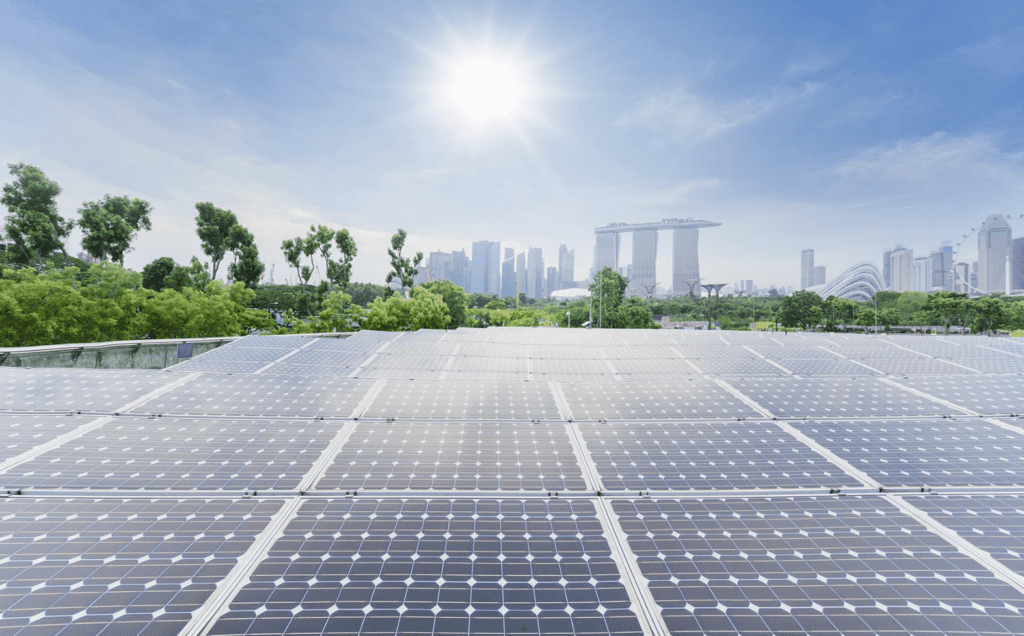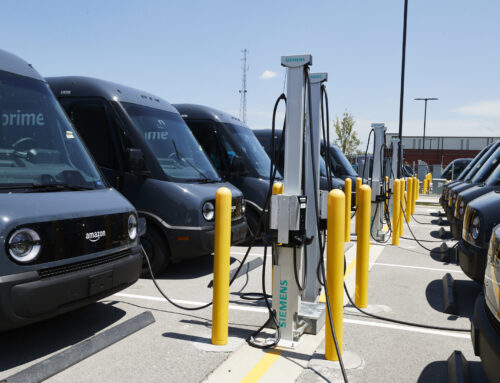The Renewables Revolution: Overcoming New Roadblocks
October 1, 2024

Singapore stands at a pivotal juncture in its journey toward sustainability, with renewable energy (RE) emerging as a beacon of hope in the fight against climate change. Post-COP 28, many countries, including Singapore, have pledged to treble renewable energy output by 2030. But despite our progress in the renewables industries, it’s urgent that we now address the roadblocks standing in our way.
By way of analogy, looking back at the meteoric rise in mobile phone, and subsequently, smartphone ownership, you’ll find that the mass uptake wasn’t solely driven by the industry’s ability to mass-produce affordable devices. These phones, now prolific, would have been rendered useless without the essential network infrastructure—an infrastructure predominantly financed and constructed by the private sector. Yet, it was the public sector’s pivotal role in licensing radio spectrum and mandating the installation of base and repeater stations on private rooftops that truly catalysed this global phenomenon.
COMMENTARY
Fast forward to today, RE stands at a similar crossroads. Once heavily reliant on subsidies, RE is now a commercially compelling venture, drawing in investors without the need for incentives or subsidies. However, the momentum behind RE is at risk of stalling well short of net-zero targets. Without swift action to address infrastructure limitations, policy and regulatory challenges, investment needs, the green technology skills gap, and ensuring a steady pipeline of projects at the required pace, the sector risks falling behind in meeting demand.
Let’s take a look at the roadblocks.
Integrating RE into the existing grid presents a formidable obstacle. Unlike traditional fossil fuel sources, which provide a constant and predictable supply of energy, renewables such as solar and wind are inherently intermittent. This intermittency poses challenges for grid stability and reliability, necessitating innovative solutions to ensure seamless integration. As photovoltaic penetration increases, we need storage to handle intermittency and to shift energy loads. Determining the optimal combination of centralised versus distributed storage, establishing standards, and addressing safety concerns are also crucial steps.
While advancements in energy storage technology such as lithium-ion batteries, flow batteries, and pumped hydro storage offer a promising avenue to mitigate intermittency, we lack investments in storage infrastructure, which are essential to harness the full potential of renewable resources. We need to store excess energy during periods of low demand and release it when demand rises, to smooth out fluctuations in supply, enhancing grid stability and resilience.
Realising the full benefits of energy storage hinges on enhanced grid infrastructure. An outdated and inadequate grid not only impedes the efficient transmission of renewable energy but also poses risks to reliability and safety. Upgrading and modernising the grid is a non-negotiable for unlocking the full potential of renewables and maximising their contribution to the energy mix.
Beyond national grids, we must also address the limitations on energy flow from country to country within the Association of Southeast Asian Nations (ASEAN). And this might be the biggest roadblock. Expanding the grid’s geographic extent requires extraordinary political coordination, encompassing government-to-government, government-to-business, and business-to-business cooperation. As in the mobile phone analogy above, unless we have this level of cooperation, opportunities will be missed in enhancing the grid, driving down costs, and accelerating the deployment of renewable technologies across the region.
In Singapore, at the end of 2023, our solar power capacity stood at 1,107.3 MW peak, accounting for about 2% of our total electricity generation. The government aims to increase this to 2 GW peak by 2030, which would meet only about 3% to 4% of our total electricity demand. This underscores the need for substantive action.
As Singapore invests in modernising its grid infrastructure to handle the influx of renewable energy and improve its transmission efficiency, projects underway such as smart grids and advanced grid management systems will contribute to better management of energy flow and distribution. Policies like the SolarNova program to aggregate solar demand across various government agencies, make it easier to achieve economies of scale. The ASEAN Power Grid project to enhance regional energy security and integration, and power agreements with Indonesia, Malaysia, and Laos, will also go a long way, while all eyes are on the Sun Cable project, which, if revived, could potentially supply up to 15% of Singapore’s electricity requirements.
Despite these endeavours, as we progress, much still needs to be done. For instance, as electric vehicles replace internal combustion engines, and electric furnaces supplant fuel-fired steel and cement production, our carbon footprint will significantly decrease. However, this will demand an even greater supply of renewable energy to power these technologies.
Last, but not least, Singapore’s push to increase solar capacity means that a robust pipeline of trained professionals is vital to implement and manage this. Lack of skilled workers can lead to project delays and increased reliance on foreign expertise, which can raise costs and affect long-term sustainability. Bridging this skills gap is urgent to maintain momentum in RE projects, and this is an area the Sustainable Energy Association of Singapore (SEAS) is active in, particularly in bringing much needed new market players up to speed. Companies should tap into Singapore’s SkillsFuture incentives for upskilling in green technologies without delay.
By confronting these roadblocks head-on and embracing innovative solutions, we can overcome the obstacles standing in the way of a clean energy future, but it requires definitive action between governments, the private sector, and civil society.
—Christophe Inglin is vice-chairman of SEAS and Kavita Gandhi is executive director of SEAS.
Search
RECENT PRESS RELEASES
Related Post

